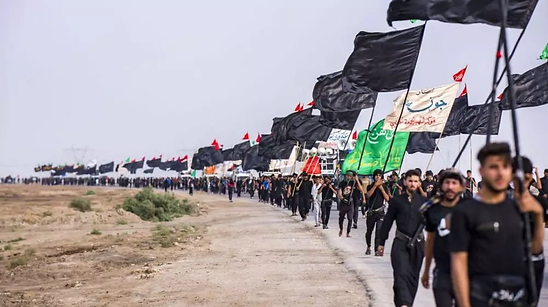karbala after husayn ibn ali (P)
The city of Karbala began with a tomb and shrine to Husayn. The city and tombs were greatly expanded but suffered repeated destruction from attacking armies. The original shrine was destroyed by the Abbasid caliph Al Mutawakkil in 850 ce and was rebuilt around 979 ce. The Wahhabi sack of Karbala occurred on April 21, 1802 under the rule of Abdul-Aziz bin Muhammed (the second ruler of the first Saudi state) involved 12,000 Wahhabi Muslims from Najd who attacked the city of Karbala. This attack left 3,000–5,000 dead and the dome of the tomb of Husayn (p) was destroyed. It was later rebuilt. On January 13, 1843 Ottoman troops entered the city. About 5,000 people (approximately 15% of the city's population) were killed.
Between 1850 and 1903, Karbala enjoyed a generous influx of money (a sum of 10 million rupees) through the Awadh bequest which originated in 1825 from the ruler of Awadh (present day northeastern portion of the Uttar Pradesh state in India) Nawab Ghazi ud Din Haider. One third was to go to his wives, and the other two-thirds to the holy cities of Karbala and Najaf. When his wives died in 1850, the money now in trust with the British East India Company was sent to Karbala and Najaf as per the wives' wishes.
When he came to power on July 16, 1979, Saddam inflicted his own version of violence. In February 1991 approximately one month into the first Gulf War, the people of Karbala (and Iraq generally) responded to a call from President George H.W. Bush to stage a coup and force Saddam Hussein to step aside. Saddam Hussein’s forces responded with brute force. In Karbala, some of Islam’s holiest shrines were destroyed and others were used as centers for murder, torture and rape. Homes of suspected rebels were ruined while suspects were executed in the streets. Leading an assault against the defenders of Karbala, Kamal Hussein Majid, a Saddam henchman stood on a tank outside the tomb of Husayn and gave the order to open fire on the shrine. The shrine was heavily damaged, the cupolas punctured with bullet holes and the great cedar doors blasted off their hinges. Iraqi soldiers put machine-gun posts on the rooftops. The closest surrounding houses were wrecked in fierce hand-to-hand fighting and army bulldozers completed the job of razing them.
Saddam went into hiding soon after the American invasion in 2003. After spending nine months on the run, he was captured on December 13, 2003. After standing trial, he was executed on December 30, 2006.
Today, throngs of hundreds of thousands of pilgrims flock to Karbala annually incessantly. The BBC estimated the crowd at the Arba’een commemoration in 2019 at 17 million.



